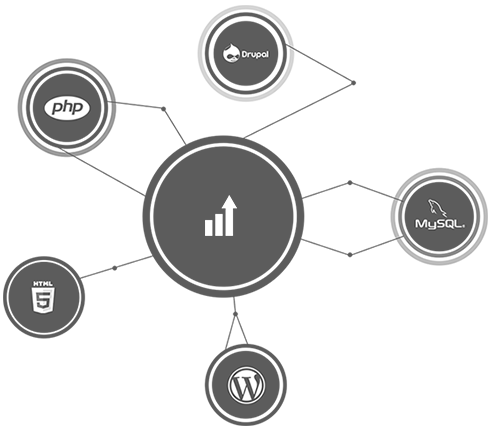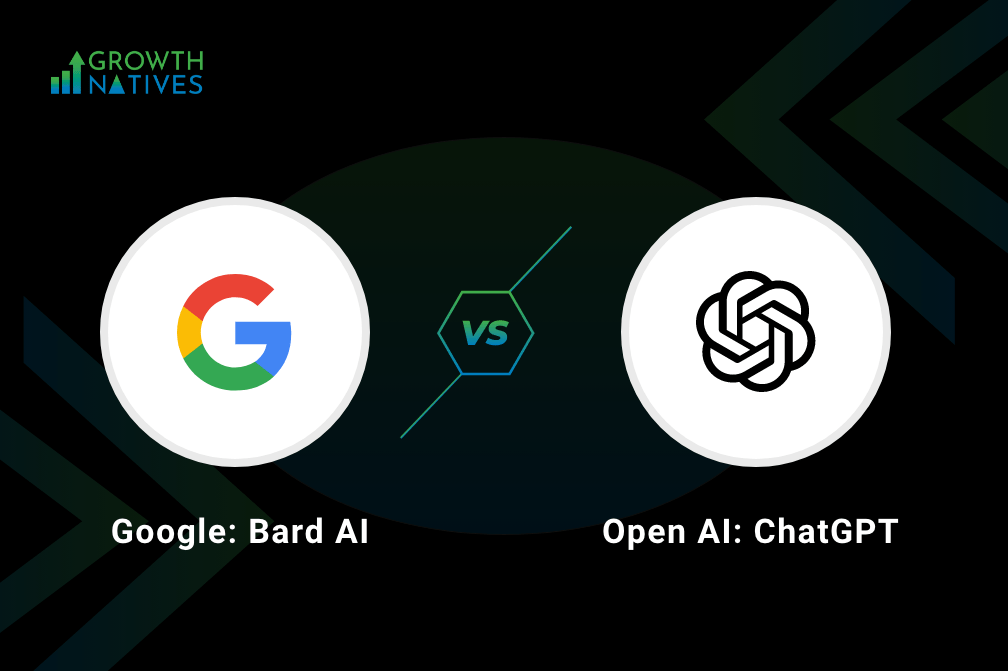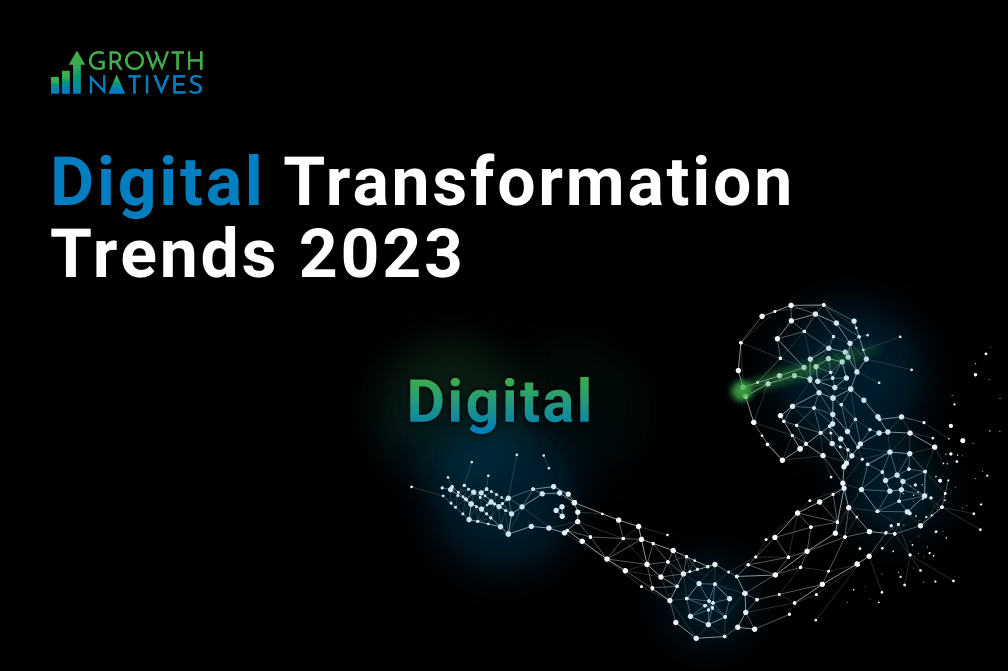Top 10 Digital Marketing Trends of 2023

Table of Contents
The rules of digital marketing have remained more or less the same. But the tools and techniques have changed, turning unimagined concepts into a norm. From hyper-personalized customer experience to automation, these new techniques, tools, and channels have helped marketers gravitate toward experience instead of simple brand awareness or product exposure.
How will these digital marketing trends play out in 2023? Will brands continue to focus on experiential marketing? Which marketing strategies are here to say? What will be the defining digital marketing trends? Let's find out in this blog.
Digital Marketing Trends You Need to Watch
1. Digital Marketing Agencies
Since 2015, Google searches for ‘digital marketing’ have increased by nearly 90%. As digital marketing evolves into a specialized technology-enabled and data-driven customer outreach marketing technique, digital marketing agencies will continue to play a major role.
Agencies have a boutique approach that allows them to address the needs of big brands, and their customized marketing strategy is a great asset for smaller niche brands. That is because digital marketing agencies have the required expertise, tools, and strategies to aid businesses in outshining their competitors.
Here is what agencies can do for your business:
- Recognize, create, and implement crucial marketing strategies
- Develop comprehensive reports as well as track your campaign progress
- Identify marketing strategies and campaigns that drive your revenue
- Generate web traffic, leads, and sales
2. Performance Marketing
When platforms such as Facebook, Google, Twitter, and Pinterest fail to engage customers and drive conversions, businesses will continue to look for alternatives such as performance marketing networks (PMN), including MediaMath and The Trade Desk.
Whether it is affiliates, resellers, or online publishers, companies will focus on leveraging these channels to focus on outcomes instead of vanity metrics such as impressions. More businesses will adopt this data-driven approach to digital marketing in the future.
3. Real-Time Messaging Platforms
Instant gratification-seeking customers want their messages and queries addressed the moment it arrives at your figurative doorstep. That's why real-time messaging platforms will continue to be popular and important in digital marketing.
The frontrunners to watch out for are:
Video
Video marketing has exponentially grown in the last 15 years. As much as 82% of all content streamed online is now video. This trend will continue and impact content marketing in two main ways:
- Videos provide an excellent way of increasing online visibility, lead generation, and customer support. Most popular video content continues to be Q&As, how-tos, and reviews. Growth Natives Tip: Include a CTA in your videos to direct your customers to your website, landing page, or another channel where you can convert them.
- Live selling on social media channels and apps, such as Facebook-Live and YouTube, is another way video is shaping digital marketing. With most businesses currently doing 40% of their sales on Facebook Live, these numbers will only increase in the future.
Hybrid Chatbots
Studies suggest that 68% of consumers like chatbots since they offer quick answers. This evolving technology will continue to play a big role next year.
Even though AI has made significant progress, chatbots are still a long shot away from mastering the art of communication. They are as intelligent as they are programmed. Anything beyond that is off the limits.
That is why brands will pivot more toward a hybrid model. Chatbots here will work together with humans to create a balance between efficiency and personalization.
4. Creative Approaches
More than half of all business communications are already happening through digital channels. To cut through this noise, your marketing campaign must be creative. That means more brand personality and out-of-the-box marketing with easily shareable content.
Some of the evolving creative approaches include:
Leveraging User-Generated Content
In 2020, Getty Museum asked its followers for artworks recreated with everyday objects to celebrate its silver jubilee. In response, users set out to generate authentic and organic content. This kind of strategy lies ahead for digital marketing, where crowdsourcing will generate more ideas for outreach. It could be a forum, blog, link-building with influencers, testimonials, referrals, and more.
Growth Natives Tip: Steer and focus on positive feedback using social media monitoring software and give social proof. That said, don't ignore neutral or negative responses, as they will allow you to continually tweak your products or services to address changing user demands.
Blurring Lines Between B2B and B2C Digital Marketing
B2B is taking a leaf out of B2C's playbook in the future. Primarily because B2B customers also desire convenience and immediate response, a norm in B2C marketing. This trend will continue in the year ahead as even SaaS companies will dole out free demos and trials of their software to increase their outreach among businesses.
Using Native Advertising
Rarely do you come across one who loves watching their favorite channel interrupted by ads. We all hate ads. That has been the biggest complaint against display advertising. Not surprisingly, the average bounce rate for such campaigns ranges between 50-90%.
That's expensive. You cannot afford to burn cash when marketing budgets continue to lag pre-pandemic spending levels. A better alternative? Native ads.
Native ads offer a convenient workaround. They are seamlessly embedded in the content and do not interrupt the viewer's experience. Think of movie product placement.
Though it is not exactly new, businesses, in the year ahead, will have to find ways to switch to native advertising. It will circumvent the ad blockers and, when done right, will appear as a seamless organic part of the content.
5. Big Data and New Technologies
Technology will be at the forefront of digital marketing as businesses learn to harness its power to increase their ROI.
Artificial Intelligence and Analytics
The computational approach to marketing design and strategy will continue in the near future. As AI and analytics determine what users find most informative and useful online, businesses will rely on these inputs to make data-driven decisions. A 2019 report shows that 28% of marketers already use AI for product recommendations, while 26% use it for campaign optimization.
Using these data-enriching methods will continue to increase efficiency and profits, as well as the adoption of marketing automation.
Mobile and Progressive Web Apps
On July 1, 2019, Google rolled out mobile-first indexing for new websites. New websites would be ranked on factors that enhance their mobile usability. Why? Because mobiles are now the go-to device, a fact that will remain unchanged for a long time.
The increasing mobile usage has also impacted business web pages. Progressives Web Apps (PWAs) is the upcoming trend in app development. PWA are web pages that behave more like an app. These can function as standalone applications and sometimes can also be installed. Netflix, Yummly, Facebook, Hulu, and Twitter are some good examples. With PWAs’ fast, reliable, and immersive experience, your business must leverage their power to keep abreast of this new technological trend.
Growth Natives Tip: To transition your web page to a PWA, you need to:
- Run website with HTTPS
- Include a Web App Manifest
- Implement a service worker
Augmented Reality and User Experience
If PWA provides a seamless experience of your content, augmented reality (AR) innovatively engages them. It is at the heart of experiential marketing.
With AR, users can insert digital objects into real-life video capture. In the year ahead, businesses will integrate AR into their marketing to enhance engagement and aid customers in the right marketing funnel.
Growth Natives Tip: While AR will continue to evolve, ensure that you incorporate it into your omnichannel marketing strategies.
Voice Search
Every time Siri turns on the lights, that's the sound of a future marketing trend: voice search. The last five years have seen a growing market for smart speakers and voice-enabled devices. Smart speaker ownership is set to reach 55% in the US this year. With voice accuracy surpassing the 95% threshold, voice search usage continues to grow and has become another channel for voice commerce.
Growth Natives Tip: Optimize your content for voice search. Also, to offer more useful information to your customers, use automated transcription to rank well in voice search results.
6. Influencer Marketing
Two kinds of influencer marketing to watch out for in 2023:
Social Influencer Marketing
The power of influencers is like a touch of a magic wand—it can make or break your product. So when top influencers complained about Instagram trying to be another TikTok, its parent company rolled back those changes without a hitch.
It is not just the power of influencer celebrities but also micro-influencers (people with 1K followers). The latter generates almost twice more engagement than those with 100K followers.
This is primarily for two reasons:
- Their engagement is active and personal.
- They tend to have more peers than fans. Statistics point to 84% of consumers trusting recommendations from peers rather than advertising.
Ensure that you harness these influencers' networks by following an omnichannel approach ranging from video content to real-world experiences.
Podcast Marketing
Podcast marketing is another influencer world limited mostly to the audio realm. With almost 70% of the American population familiar with this term, and 63% of its listeners having researched or bought products/services heard on a podcast, it is another untapped digital marketing space.
Podcasts are ripe for brand placement as it is a niche space with a community of followers. You can leverage its potential by creating your own podcast, being a guest in a popular one, or through product placement.
7. Omnichannel Marketing
Today's customer hops, skips, and jumps across multiple channels in the same breath. They would be talking to customer care over the phone while tweeting about it simultaneously. If customers can be so nimble in their usage, why not businesses?
Staying nimble requires you to evolve and incorporate omnichannel marketing. Omnichannel marketing allows for a consistent brand personality across channels that keeps you in touch with your customers where they prefer. It applies to customer service, products, services, and marketing communications.
Growth Natives Tip: Use CRM platforms and help desk solutions to monitor and engage across channels seamlessly.
8. Experience Over Impression
Experiential marketing is the new marketing mantra for the year ahead. With a CAGR of 10.45%, it is expected to value at $12.51 billion by 2023. But what exactly is it?
Experiential marketing supplements the world of digital marketing with real-world events and promotions. For B2B businesses, live events provide them with added outreach and a competitive edge. You can get more information from your target audience during such events and find creative ways of engaging with them. Moreover, it builds on customers' positive experiences when they find real-world events that keep them in mind.
Growth Natives Tip: Ensure that your customers are connected through your channels.
9. Virtual Events
Post-pandemic, businesses are evaluating their approach to events and promotions. In March 2020, the first month of pandemic lockdown, there was a 50% increase in virtual events. The trend will continue in virtual or hybrid events, with people still hesitant about travel.
10. Local SEO
The SEO game in 2023 is going to be hyper-local. Your content's international ranking will be irrelevant if your products and services do not appear in local searches. If you are a brick-and-mortar store, you need to optimize your local search to increase visibility among your neighborhood customers.
You can also do more online listings to increase your local search and optimize the same for voice search. Further, ensure that your business name, address, phone number, and website is consistent across all your listings.
Conclusion
The future is bright and immense for digital marketing in 2023. However, you will need to decide which approach fits your organization. Your marketing goals should reflect in your ROI first.
Incorporating a mix of these trends will keep you ahead in the game.
Still confused about what technology or strategy will make you go omnichannel and ensure success? Growth Natives is here to address all your needs. Our specialized marketing team will guide you every step of the way. Write to us at info@growthnatives.com to shoot your queries or know more.
Author Box
Sakshi Arora
Sakshi Arora is a seasoned content writer and editor with extensive experience across various industries including B2C, B2B, travel, e-commerce, and IT. In her free time, she enjoys expressing her creative side through painting and writing poetry. She also finds solace in nature and has a deep spiritual connection. Music brings her immense joy.




